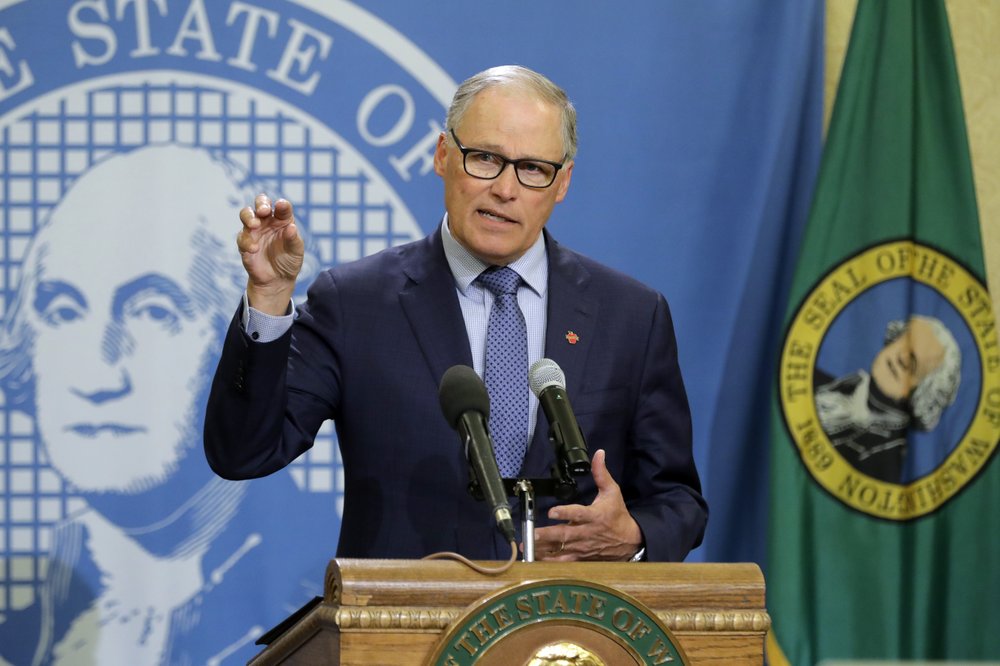Announcing plans to begin reopening his state, South Carolina Gov. Henry McMaster cited the ongoing economic damage from the coronavirus pandemic.
“South Carolina’s business is business,” he declared this week as he lifted restrictions on department stores, florists, music shops and some other businesses that previously had been deemed nonessential.
At the same briefing, the state’s chief epidemiologist, Dr. Linda Bell, seconded the importance of economic recovery but quickly inserted a note of caution: “The risk of exposure remains for everyone,” she said.
It is a scenario playing out across the country as governors wrestle with weeks of quarantine-fueled job losses and soaring unemployment claims and the simultaneous warnings of public health officials who say lifting stay-at-home orders now could spark a resurgence of COVID-19.
Meanwhile, as scattered groups of protesters have staged loud demonstrations in favor of rescinding quarantine orders, a recent public opinion poll finds that a majority of Americans believe it won’t be safe to stop following social distancing guidelines anytime soon.
The dire hit to the economy is clear: Jobless numbers released Thursday show Depression-era levels of unemployment, with 1 in 6 American workers losing their job amid the pandemic. In South Carolina, more than 14% of the labor force has claimed to be out of work due to the outbreak.
But most state leaders acknowledge they have not met many of the key benchmarks that federal guidelines recommend before reopening, such as having robust systems in place for testing and tracing the contacts of those who are positive for the virus.
The difference in how governors are responding to that reality depends largely on their political party, with a handful of Republican leaders moving eagerly forward despite the discrepancies, while most Democratic governors have slammed on the brakes.
McMaster and other Republicans, most notably Georgia Gov. Brian Kemp, have pushed forward in accordance with President Donald Trump’s ongoing call to reopen the U.S. economy — only to have the president publicly question such actions.
Late last week, Trump used Twitter to urge his supporters to “liberate” three states led by Democratic governors. But on Wednesday, Trump did an about-face, saying he “disagreed strongly” with Kemp’s aggressive plan to reopen restaurants, movie theaters, nail salons, barbershops, tattoo parlors, gyms and other close-contact businesses on Friday.
Kemp is undeterred. Hair salons, bowling alleys and certain other businesses began opening cautiously on Friday, with more scheduled to open Monday under social-distancing guidelines. He, like McMaster, said he trusts people in the state to take the necessary precautions to stay safe and not further the spread of the virus.
“I am confident that business owners who decide to reopen will adhere to minimum basic operations, which prioritize the health and well-being of employees and customers,” Kemp wrote in a tweet Wednesday night responding to the president’s criticism.
In defending his decision, Kemp also has cited his state’s efforts to ramp up testing and tracing of the virus; Georgia ranks toward the bottom of per capita testing. McMaster has alluded to starting contact tracing efforts in South Carolina at some point, but has not elaborated.
In Oklahoma, Republican Gov. Kevin Stitt said his decision to reopen barbershops, hair salons, spas and pet groomers as early as Friday is in line with the phased-in approach recommended by the White House and is supported by data showing hospitalizations in the state have gone down. But the decision was criticized as “hasty” by the Oklahoma State Medical Association.
“Even without widespread testing, Oklahoma has seen an ongoing growth in the number of cases, hospitalizations and deaths in the past week alone,” Dr. George Monks, the association’s president, said in a statement. “According to the Trump administration, states should not begin this process until they’ve seen a two-week downward trajectory in COVID-19 cases, and we are far from this point.”
In Tennessee, public health officials have defended Republican Gov. Bill Lee’s plan to reopen most businesses by May 1, citing a downward trajectory in the growth rate of positive cases.
The governors’ actions stand in stark contrast to the decidedly more cautious approach of their Democratic counterparts in California, Michigan, New York, Oregon, Virginia and Washington, who say they will base their decisions on reopening the economy primarily on public health data and their ability to keep the virus outbreak in check.
“This is going to move slower than any of us would want, but it is the only way to protect the health and lives of Oregonians,” said Oregon Gov. Kate Brown.
Jay Inslee, governor of Washington, one of the first states to report confirmed cases of the virus in January, said any return to public life will happen in small steps and only after the state has met federal benchmarks, including adequate testing and a vaccine.
“To turn back on this successful temporary approach now would be disastrous,” he said this week.
California Gov. Gavin Newsom has framed his decision-making process on lifting restrictions as a “health-first” approach.
He recently allowed scheduled surgeries to resume, but has warned the state’s nearly 40 million residents that, while he understands the desire to get back to work and reclaim a sense of normalcy, lifting the orders too soon would be a public health mistake.
“This phase is one where science, public health — not politics — must be the guide, where we must be open to argument, interested in evidence, where we cannot be ideological in any way shape or form,” Newsom said.
McMaster, one of the last to implement stay-at-home orders and now one of the first to begin opening his state back up, says he has no desire to endanger residents. But he says it’s imperative that people go back to work. He has said the federal government’s guidelines are recommendations, not requirements.
“Our goal is to save lives, but also to save jobs and to save families and save the futures that are depending on these businesses that are so heavily hit and impacted,” he said.
(AP)











